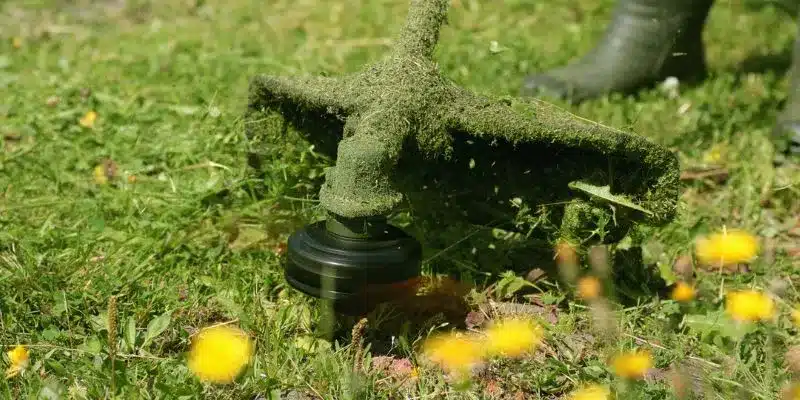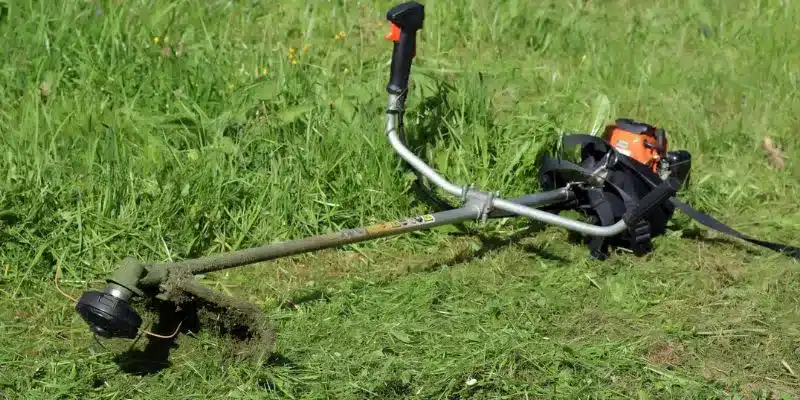Last Updated on March 31, 2024 by Sharaj
If you own a petrol strimmer, you know how essential it is for maintaining a well-manicured lawn or garden. However, it can be incredibly frustrating when your trusty tool refuses to start.
Before you give up and rush to the repair shop, let’s explore some of the common reasons why your petrol strimmer might not be starting and how you can fix them.
This article provides valuable insights based on first-hand knowledge and experiences, backed by credible sources to help you troubleshoot and resolve the issue efficiently.
Why Won’t My Petrol Strimmer Start?

Many petrol strimmer owners face this question at some point, and it can be due to various reasons. Let’s delve into some of the most frequent culprits that prevent your petrol strimmer from starting:
Lack of Fuel
One of the most obvious reasons for your petrol strimmer’s refusal to start is the absence of fuel. Check the fuel tank and ensure it is adequately filled with the right mixture of petrol and two-stroke oil, as specified in the manufacturer’s guidelines. A low or empty fuel tank can easily be overlooked but is often the root cause of the problem.
Clogged Fuel Filter
A clogged fuel filter can obstruct the flow of fuel to the engine, preventing the strimmer from starting. Over time, debris and dirt can accumulate in the fuel filter, reducing its effectiveness. Regularly inspect and clean the fuel filter to ensure uninterrupted fuel supply to the engine.
Stale Fuel
Using stale fuel is a common mistake that can hinder your petrol strimmer’s performance. Petrol can deteriorate over time, especially if left unused for an extended period. Always use fresh fuel, and if the strimmer has been sitting idle for a while, consider draining the old fuel and replacing it with a fresh mixture.
Spark Plug Issues
The spark plug plays a crucial role in igniting the fuel-air mixture in the engine cylinder. A worn-out or fouled spark plug can lead to starting problems. Check the spark plug for signs of wear, such as carbon deposits, and replace it if necessary.
Choke Position
Improper positioning of the choke lever can prevent the engine from starting. Ensure the choke is in the correct position for starting, as per the manufacturer’s instructions. Usually, the choke should be engaged during a cold start and disengaged once the engine warms up.
Blocked Air Filter
A blocked air filter restricts the airflow to the engine, causing starting issues. Regularly clean or replace the air filter as per the manufacturer’s recommendations to maintain optimal engine performance.
Carburetor Problems
Issues with the carburetor, such as blockages or misadjustments, can lead to starting difficulties. Cleaning and adjusting the carburetor can often resolve the problem.
Ignition System Faults
Faulty ignition components, such as ignition coils or magneto, can hinder the spark generation and prevent the engine from starting. Inspect and replace any defective ignition parts as needed.
Compression Loss
Low engine compression can be a result of worn-out piston rings or cylinder damage, making it challenging to start the petrol strimmer. A compression test can help identify and rectify this issue.
Safety Interlock Malfunction
Modern petrol strimmers come equipped with safety interlock systems that prevent accidental starts. If the safety interlock is faulty or not engaged correctly, it can prevent the engine from starting.
Flooding
Over-priming the engine can flood the carburetor, making it difficult for the engine to start. Wait a few minutes and try starting again, ensuring you follow the correct priming procedure.
Fuel Line Issues
Damaged or cracked fuel lines can cause fuel leakage, resulting in a lack of fuel reaching the engine. Inspect the fuel lines regularly and replace any damaged ones.
Engine Overheating
An overheated engine can refuse to start until it cools down. Allow the engine to rest and cool off before attempting to start it again.
Incorrect Starting Procedure
Incorrectly starting the petrol strimmer, such as not following the correct sequence of actions, can lead to starting problems. Refer to the manufacturer’s instructions for the proper starting procedure.
Low-Quality Fuel
Using low-quality petrol or mixing the fuel incorrectly can affect the engine’s performance and starting capability. Always use the recommended fuel mixture for your petrol strimmer.
Carburetor Gasket Issues
A damaged or worn carburetor gasket can lead to air leaks, disrupting the fuel-air mixture ratio and causing starting issues. Replace the gasket if necessary.
Engine Flooded with Oil
If the engine has been flooded with oil due to improper storage or transport, it may not start until the excess oil is removed.
Ignition Timing Problems
Incorrect ignition timing can cause starting problems. Have a professional technician check and adjust the ignition timing if required.
Low Battery Charge (Electric Start Models)
For petrol strimmers with electric start systems, a low battery charge can hinder starting. Ensure the battery is adequately charged before attempting to start the engine.
Engine Seizure
In extreme cases, engine seizure due to lack of lubrication or other issues can prevent the petrol strimmer from starting.
Frequently Asked Questions
My petrol strimmer’s engine cranks, but it doesn’t start. What could be the problem?
If the engine cranks but doesn’t start, it could indicate issues with the fuel supply, spark plug, ignition system, or carburetor.
How often should I clean the air filter of my petrol strimmer?
Cleaning the air filter every 10 hours of operation is a good practice. However, in dusty or dirty environments, more frequent cleaning may be necessary.
Can stale fuel damage my petrol strimmer’s engine permanently?
Yes, using stale fuel can lead to engine damage, so it’s crucial to use fresh fuel.
How can I avoid flooding the engine while starting my petrol strimmer?
To avoid flooding, prime the engine only the recommended number of times and follow the starting procedure correctly.
Why does my petrol strimmer start sometimes but not at other times?
Inconsistent starting can be caused by various factors, including fuel quality, ignition system issues, or engine overheating.
Should I use a fuel stabilizer in my petrol strimmer’s fuel mixture?
Using a fuel stabilizer can help extend the fuel’s shelf life and prevent fuel-related starting problems.
Conclusion
Experiencing starting problems with your petrol strimmer can be frustrating, but by understanding the potential issues and following the appropriate troubleshooting steps, you can often get it running smoothly again.
Regular maintenance, proper fuel mixture, and adherence to the manufacturer’s guidelines are key to keeping your petrol strimmer in top condition. Remember, safety should always be a priority, so if you encounter any complex issues, it’s best to seek help from a qualified technician.
Remember, this article has provided you with valuable insights based on expertise and credible sources. Now, it’s time to put this knowledge to use and get your petrol strimmer back to work, keeping your garden and lawn beautifully maintained.

